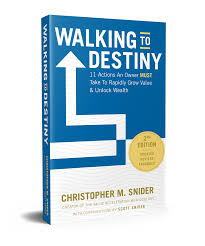When it comes to valuing a business, we are consistently talking with clients about what’s not showing up in the numbers. It’s relatively easy to look at top-line revenue, profit, and everything in between, but there’s always more to the story. Whether you are an entrepreneur who is building the value of your business, or if you’re actively looking to acquire an established business, understanding the 4C’s – human capital, customer capital, structural capital, and social capital – can greatly add to or subtract from a business’s true value.
What Are the 4Cs?
The 4C’s are human capital, customer capital, structural capital, and social capital. Each of them plays a crucial role in a company’s intrinsic value. Virtually every business has these components in some form, and they should never be overlooked and constantly tended to. Let’s break them down a little further and uncover how each of these aspects contributes to the value of a business.

- Human Capital:
- Skillset and Expertise: Highly skilled and knowledgeable employees can drive innovation, productivity, and efficiency within the company, which can positively impact profitability and growth prospects.
- Employee Retention: A company with a loyal and talented workforce often experiences lower turnover rates, reducing recruitment and training costs.
- Culture and Reputation: A positive workplace and reputation for employee satisfaction can attract top talent and enhance brand value, leading to higher customer loyalty and confidence.
- Customer Capital:
- Brand Loyalty: Businesses with strong customer relationships and loyalty tend to have more predictable revenue streams and higher customer lifetime value.
- Market Positioning: A loyal customer base can provide a competitive advantage by insulating the business from price wars and attracting new customers.
- Feedback Loop: Understanding customer needs and preferences enables companies to develop products and services that better meet market demands and market share.
- Structural Capital:
- Intellectual Property: Patents, trademarks, copyrights, and trade secrets represent valuable assets that can differentiate a business from competitors and provide barriers to entry.
- Processes and Systems: Efficient internal processes and robust IT infrastructure can enhance operational efficiency, reduce costs, and improve product quality and delivery speed.
- Knowledge Management: Institutional knowledge, best practices, and organizational learning mechanisms contribute to innovation and continuous improvement, driving long-term competitiveness and profitability.
- Social Capital:
- Network Effects: Strong relationships with stakeholders, including suppliers, partners, and local communities, can create synergies and open new business opportunities.
- Reputation and Trust: A positive reputation for ethical behavior, social responsibility, and community engagement enhances brand value, attracts customers and investors, and mitigates risk.
- Collaboration and Innovation: Access to diverse perspectives and expertise through social networks can foster creativity, problem-solving, and innovation.
How Much Do These Matter?
Christopher Snider, owner of the Exit Planning Institute and creator of The Value Acceleration Methodology, points out in his book Walking to Destiny, a must-read for entrepreneurs looking to harness the value of their business, that this intellectual capital can attribute up to 80% of a business’s value! At North Point, we encourage business owners to adopt a “Best in Class” mindset, which means pursuing practices and strategies that give the owner(s) the best opportunity to set themselves apart from their competitors, drive higher multiples, and ultimately a successful exit.

I find it best to put yourself in the seat of a buyer when looking at the components of the 4C’s. Ask yourself, would you be willing to pay more for a company that has these things in place or less? The answer is almost surely more.
Even more importantly, a business that is weak in these areas will find it hard, if not impossible, to demand a premium on its value. This comes full circle when the day comes to exit and monetize your business. A business that has not emphasized the 4C’s will likely have a buyer walking into a situation that requires more work, headaches, and risk than they would like to take on.
So now what? Every business is on its own journey when it comes to the 4Cs. The practices and strategies that may need to be adopted will be different depending on the industry and the business itself. The answers to “What do I do now?” will be different from business to business. Ultimately, this requires an owner to constantly revisit where they stand in these areas. Here are some good starter questions to answer:
- What steps can I take to make business transferable?
- What can I do to make my talent more transferable?
- How can I help ensure that my customer relationships are transferable?
- Are my processes and technologies transferable?
- Am I ingraining a culture that raises the bar for everyone it touches?
By consistently keeping your business focused on the 4C’s, business owners and buyers can gain a more comprehensive understanding of a company’s value drivers, risk factors, and growth potential, leading to more informed decisions, better business performance, and enhanced value over the long term.































